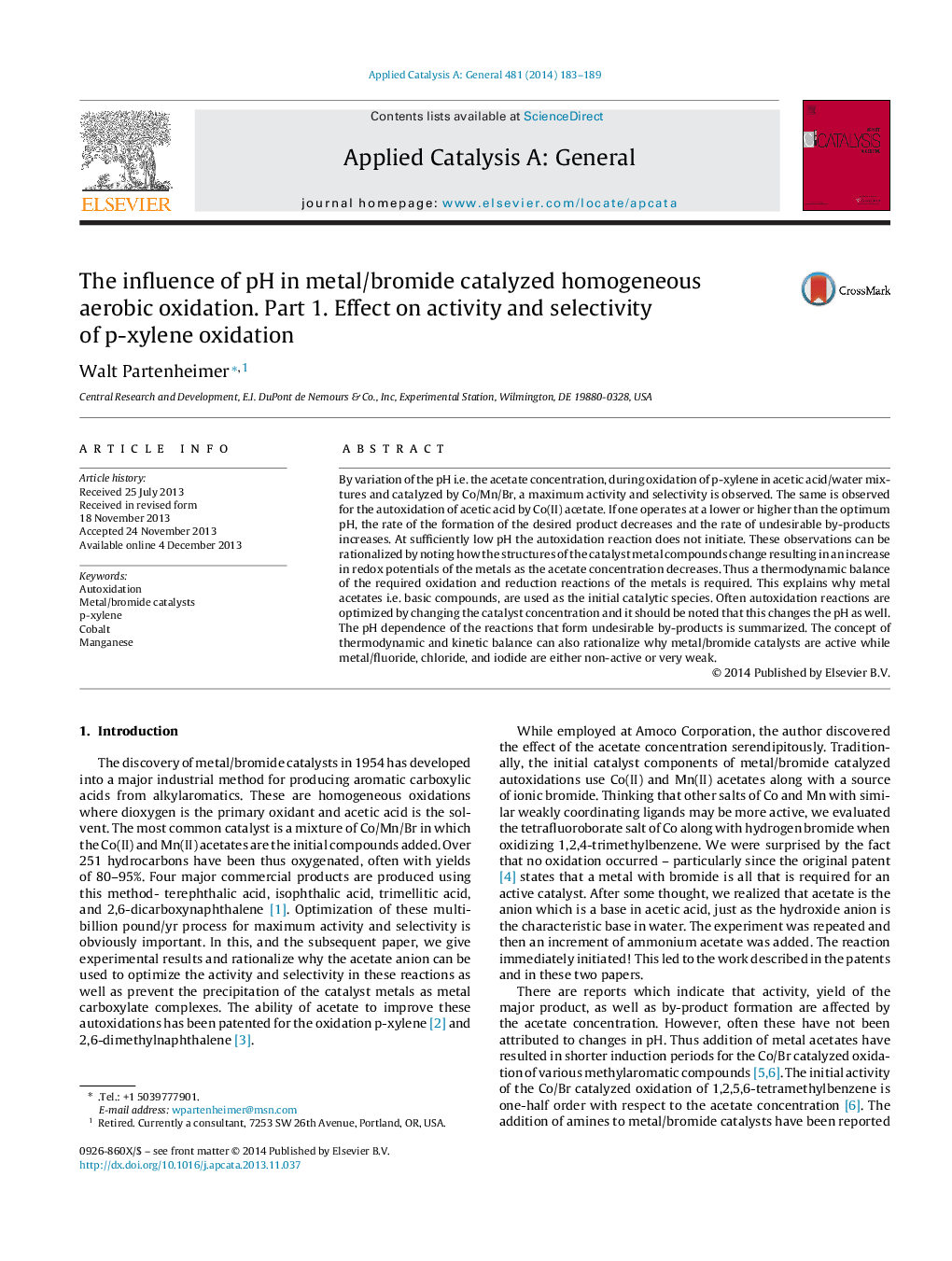| کد مقاله | کد نشریه | سال انتشار | مقاله انگلیسی | نسخه تمام متن |
|---|---|---|---|---|
| 39889 | 45838 | 2014 | 7 صفحه PDF | دانلود رایگان |

• A maximum selectivity and activity is seen when pH is varied during p-xylene oxidation.
• Observations are explainable by the effect of acetate on redox potentials of catalyst metals.
• Variation of catalyst concentration in oxidation reactions also changes the pH.
• Thermodynamic and kinetic balance explains activity of metal/halogen catalysts.
By variation of the pH i.e. the acetate concentration, during oxidation of p-xylene in acetic acid/water mixtures and catalyzed by Co/Mn/Br, a maximum activity and selectivity is observed. The same is observed for the autoxidation of acetic acid by Co(II) acetate. If one operates at a lower or higher than the optimum pH, the rate of the formation of the desired product decreases and the rate of undesirable by-products increases. At sufficiently low pH the autoxidation reaction does not initiate. These observations can be rationalized by noting how the structures of the catalyst metal compounds change resulting in an increase in redox potentials of the metals as the acetate concentration decreases. Thus a thermodynamic balance of the required oxidation and reduction reactions of the metals is required. This explains why metal acetates i.e. basic compounds, are used as the initial catalytic species. Often autoxidation reactions are optimized by changing the catalyst concentration and it should be noted that this changes the pH as well. The pH dependence of the reactions that form undesirable by-products is summarized. The concept of thermodynamic and kinetic balance can also rationalize why metal/bromide catalysts are active while metal/fluoride, chloride, and iodide are either non-active or very weak.
Figure optionsDownload high-quality image (108 K)Download as PowerPoint slide
Journal: Applied Catalysis A: General - Volume 481, 5 July 2014, Pages 183–189